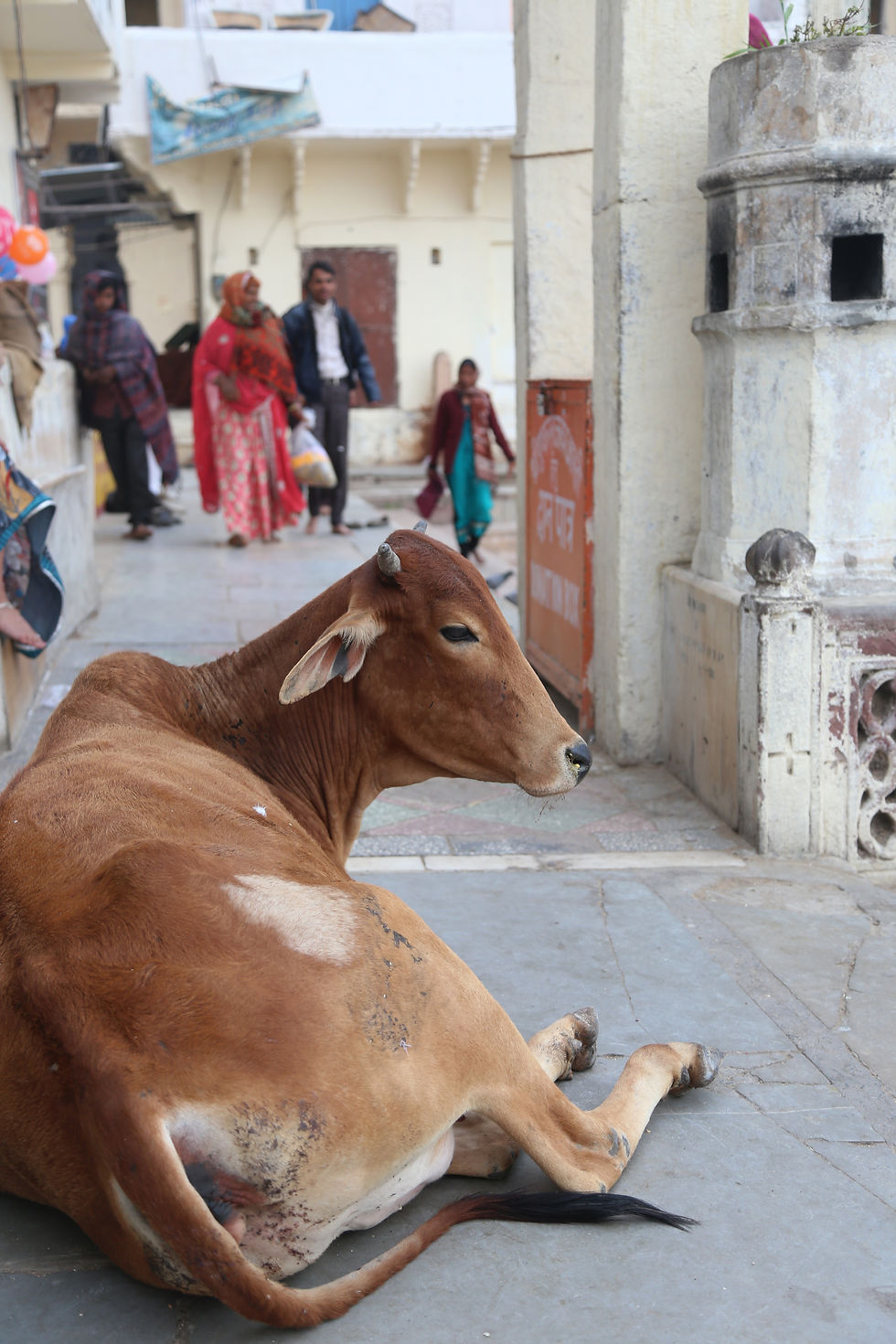The Fringes of Antiquity
- sydneyrswitzer
- Mar 28, 2019
- 3 min read

Nestled in the rocky hills of the Aravali Mountain Range, tucked between red cliffs lined with scrubby bushes, is the pilgrimage town of Pushkar.

Settled around the holy Pushkar Lake, sets of steep stone steps, or ghats, lead up to winding lines crammed with organic cafes and shops selling identical cotton hippie-yoga clothing. Each building has four or five even steeper sets of stairs leading up to a rooftop terrace where you can find identical menus of banana pancakes and 'curd honey muesli'. Identical guesthouses offer plain rooms where long-stay visitors set up camp for their laid-back schedules of meditation and flute lessons.

The weather was turning, and while my open-windowed room was freezing at night, the days were hot and the sun was bright. I sought refuge in the twisting side-streets, trying to get away from the tourist scene centred around the lake.

The name Pushkar comes from the ancient Sanskrit word for 'lotus'. It's believed that Brahma, creator of the Universe, dropped a lotus flower to earth and it fell in Pushkar. Hindus believe many flowers to have potent spiritual energies, and a lotus is one of the strongest. A lotus grows from the mud at the bottom of the lake, and while remaining connected to it's roots, rises to the surface and emerges - pure and white and clean.

The town of Pushkar is mentioned in the early Hindu scriptures of the Ramayana and the Mahabharata dating back to the first millennium. Coming from the hurry of Agra and Jaipur, the chilled out Pushkar vibe was a bit of a shock, but I quickly adjusted to the ancient history which was hidden just beneath the surface. In addition to the falafel shops and smoothie stalls lining the lanes leading up from the lake, there were also temples elaborately decorated in mirror-work, murals, and hidden secrets. Most of the temples were completely empty, and I was free to explore on my own.

But perhaps more enchanting than the architecture and idols were the traditions I encountered. While the tourism of Pushkar can be staggering, 95% of the tourists are actually domestic - Indians coming on pilgrimage to bathe in the holy waters of the lake. Throughout the day pilgrims can be seen bathing on the ghats, immersing themselves - sometimes clothed and sometimes mostly naked - in the water.

Rajasthani village women would show up, covered head to toe, including a veil over their faces, and strip naked except for a scarf around their waists, all in full view of the male pilgrims and the foreigners lounging on the stairs. At first it seemed shocking - the contrasts in the apparent expectations of modesty - but then it began to seem like a part of their normal life. It wasn't sexualized or indecent, as that sort of public nudity would be seen in Judaism. It seemed to be something that was part of their religion and culture from antiquity, and remained to today.

While parts of Pushkar reeked of appropriating tourists and commercialized spirituality, in parts of Pushkar it felt as if time had become tangible and you could physically touch the history. The rituals, the architecture, the air lingering around the lake at sunset - it all seemed like something from a world so far away from my own.

Three days later I finished up my falafel and shoved my way onto the packed public bus to Ajmer, the transit hub that would take me onward to Jodhpur. But as I left I took that tangibility with me - the idea that the things I was experiencing were contemporary relics of a very real history. I've seen the Bollywood Hindu epics - the fighting, the princesses, the grandeur. While these films might be made up, these palaces that I was touring, these ancient pilgrimage towns full of people living out the traditions of their ancestors, were very real, and the opportunity to experience these traditions is something I'm so grateful for.



























